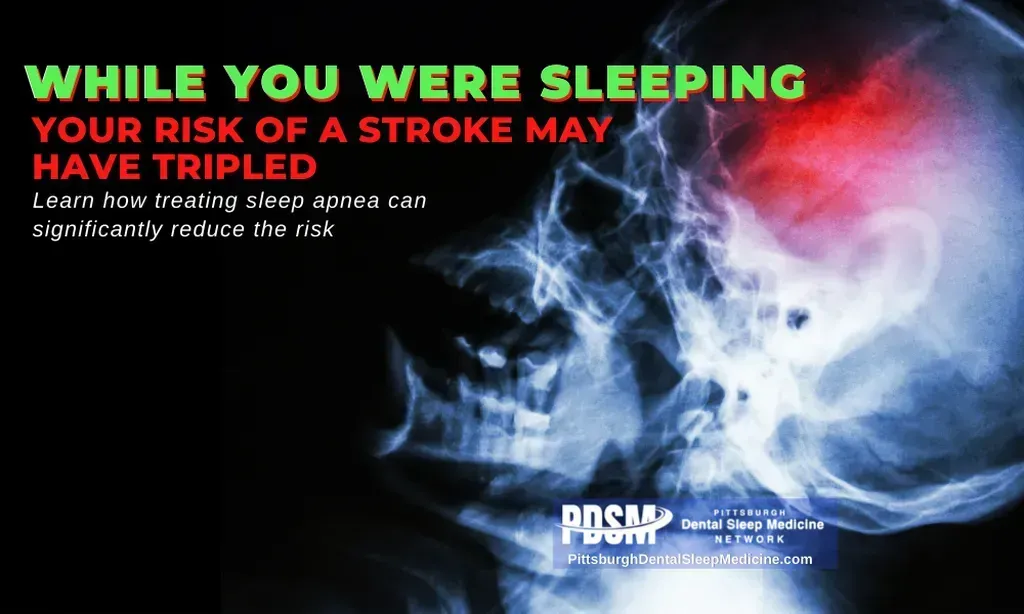While You Were Sleeping

Stroke is a disease that affects the arteries leading to and within the brain. It ranks as the fifth leading cause of death and disability in the United States.
A stroke occurs when a blood vessel that carries oxygen and nutrients to the brain is either blocked by a clot or bursts (ruptures). When that happens, part of the brain cannot get the blood and oxygen it needs, so brain cells die.
There are two different kinds of strokes that a person can have: Ischemic and Hemorrhagic.
- Ischemic stroke happens when a major blood vessel in the brain is blocked, most likely by a blood clot, or it may be blocked by a buildup of fatty deposits and cholesterol. This buildup is called plaque.
- Hemorrhagic stroke occurs when a blood vessel in your brain bursts, spilling blood into nearby tissues. With a hemorrhagic stroke, pressure builds up in the nearby brain tissue, which can cause extensive damage and irritation.
Anyone can have a stroke at any age, but the chance of having a stroke increases if you have certain risk factors. Some risk factors for stroke can be changed or managed, while others can’t.
Risk factors that CANNOT be changed include age, gender, race, genetics, and history of prior strokes.
Risk factors that CAN be changed include high blood pressure, heart disease, smoking, diabetes, medications, high cholesterol, amount of exercise, and obesity.
Another predominant condition that can increase the risk of stroke by 60% is Obstructive Sleep Apnea. Obstructive Sleep Apnea (OSA), is a condition that causes periodic disruption in breathing while sleeping. Epidemiologic studies estimate that between 12% and 25% of adults in the United States (22 million) have OSA. Eighty percent of those adults who have moderate to severe apnea are not even aware that they suffer from the condition.
With OSA, the cumulative lack of adequate oxygen over time causes blood vessels to narrow. Eventually, narrowed blood vessels in the brain can obstruct blood flow resulting in a stroke.
A National Institute of Health study in April 2010 concluded that OSA increases the risk of stroke in middle-aged and older men and women. The study found that the increased risk of stroke in men appears even in mild sleep apnea and rises significantly with the severity of the disease. Notable in this report was that the increased risk was "independent" of other stroke risk factors such as obesity, high blood pressure, race, smoking, and Type 2 Diabetes. Recent research links OSA to silent or mini-strokes in which there is brain tissue death without apparent symptoms.
Even people with very mild sleep apnea were linked to having silent strokes. The National Stroke Association reports that nearly two of every three stroke survivors have sleep-disordered breathing, particularly OSA.
While all of the above research supports the debilitating nature of sleep apnea on brain health, the key point is the pressing need for qualified medical and dental professionals to increase their efforts to screen and refer suspicious individuals to sleep labs for testing. It is estimated that only 10% of individuals with OSA have actually been diagnosed, and it is a fact that only one of every four of those is being successfully treated.
Sleep professionals must collaborate and be certain that diagnosed OSA individuals know their treatment options and follow through with the option that they can adhere to in order to manage their disease.
Current treatment options are CPAP (air pressure face mask while sleeping), oral sleep appliances (mouthpiece worn over the teeth while sleeping that repositions the jaw), or airway surgeries.
An oral appliance is a device that works in your mouth during sleep. It looks a lot like an orthodontic retainer or a sports mouthguard, although the technology behind oral appliances is more advanced.
Oral appliances are available from many dental offices, but most prefer to select one type of oral appliance and offer it to all patients. The team at Pittsburgh Dental Sleep Medicine recognizes that not everyone has the same set of needs (or the same anatomy) and that offering a range of options is a better way to help you find the right fit for your needs.
Most oral appliances fall into one of two categories: mandibular repositioning devices or tongue-retaining devices. A tongue-retaining device works by engaging the tongue and moving it to a more forward position in your mouth during sleep. Mandibular repositioning devices change the position of your jaw during sleep, which helps open your airway.
Sleep apnea is a serious, growing epidemic in our country. It is public awareness that is our greatest defense.
If you are concerned about having an increased risk of stroke and have been diagnosed with sleep apnea or have chronic snoring, talk with your doctor right away about your health consequences and contact Pittsburgh Dental Sleep Medicine to speak with a specialist in oral appliance therapy for the treatment of OSA
Pittsburgh Dental Sleep Medicine serves the tri-state area of Pennsylvania at convenient locations in Wexford, Monroeville, and McMurray. Specializing in the treatment and management of obstructive sleep apnea (OSA) and chronic snoring, Pittsburgh Dental Sleep Medicine has a highly regarded team of dentists.
Oral appliance therapy is covered by most major medical insurance plans.

